Add warmth and comfort to your home with these design ideas from past decades.

With the arrival of the cooler months, it’s natural to start thinking about how you can make your home more cozy and inviting. Now is the perfect time to make little (or big) changes that will infuse your home with an added layer of softness and warmth.
For inspiration, we looked to the past. We talked to a pool of experts and rounded up seven interior design trends from the 1950s onward that are not only making a comeback in the modern home, but will have you reaching for your throw blanket and shearling slippers.
1950s
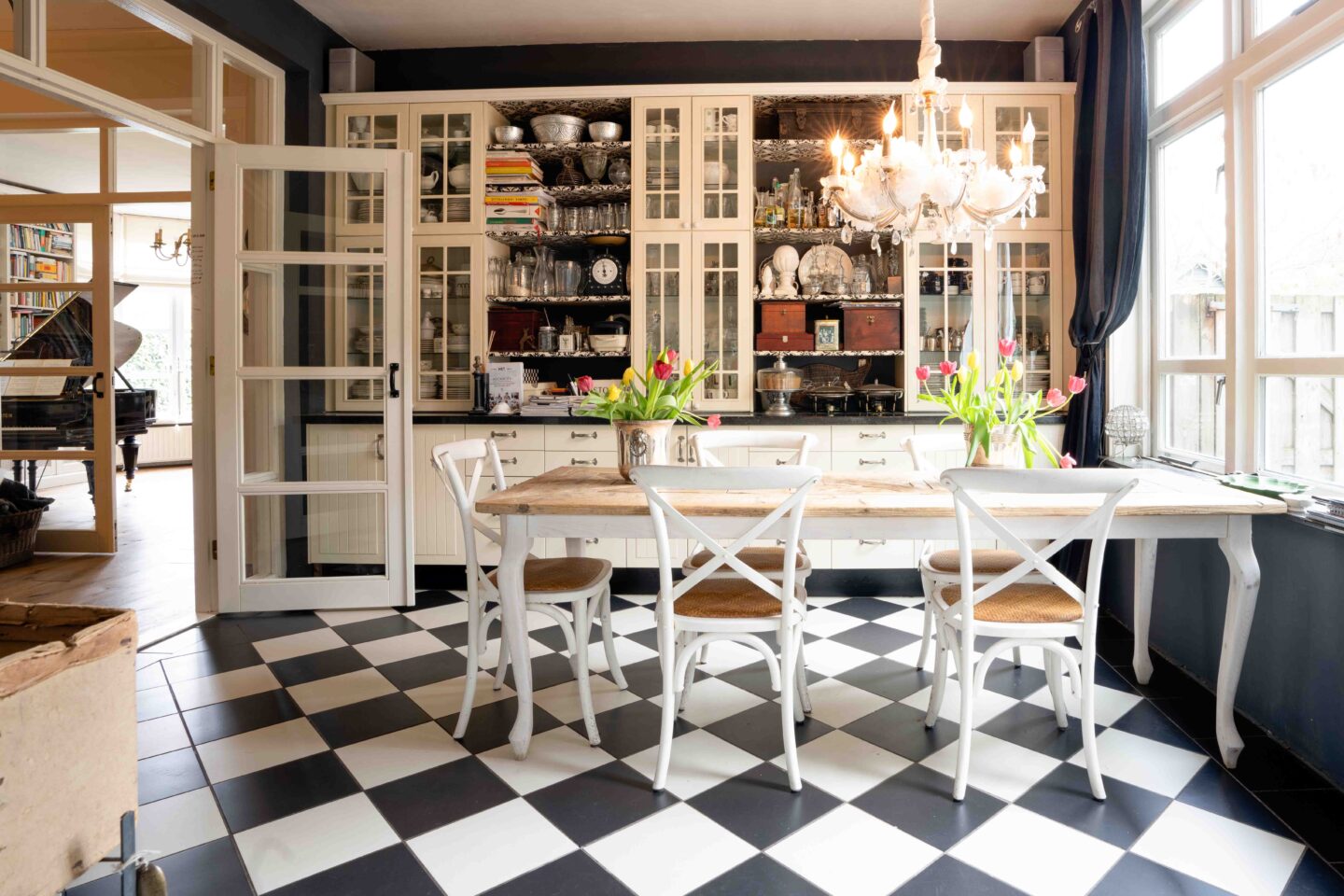
Checkered tile floors
Design trends in the 1950s were often focused on making your home feel unique and interesting, and checkered tile tends to do just that.
“Checkered floors are making a comeback because everything has been monotone for the past few years,” interior designer and architectural illustrator Rebecca Hansen says.
The design used to be a mainstay in kitchens, but these days, it wouldn’t be out of place in a bathroom or other areas of the home. “Using a checkered floor pattern in an entry, sunroom or dining room adds contrast and depth to a space,” Hansen adds. For a low lift, you can add this style to your space with a trendy checkerboard-patterned rug that’s soft underfoot.
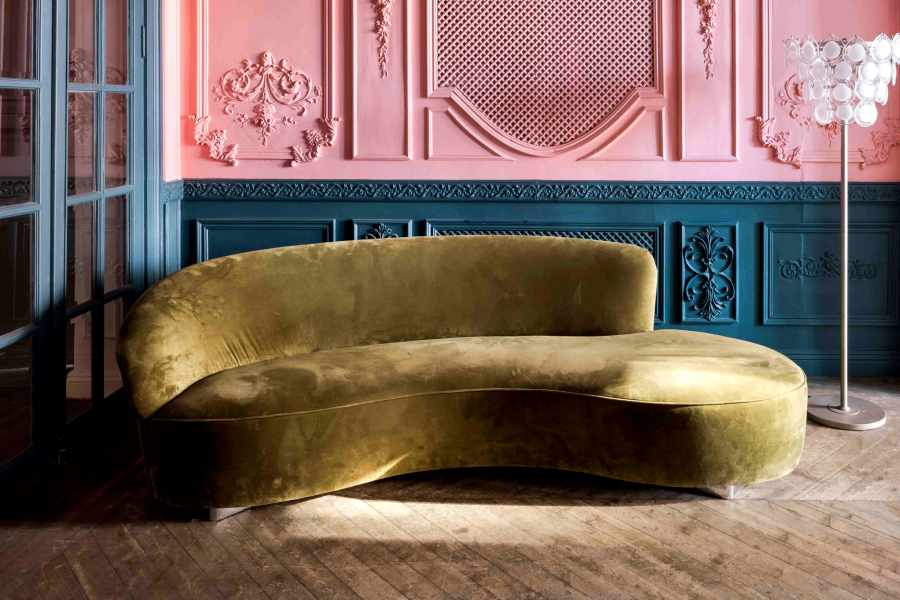
Curvy couches
Curved furniture, like scalloped couches, with soft lines and a bubble-like appearance were particularly popular in the 1950s, adding a soft and airy ambiance to rooms. The lack of harsh edges helps create warmth that can be difficult to emulate with more traditional furniture.
Curved furniture is back in favor among people who want their home to express a calming and inviting energy, as a refuge following the height of the pandemic, interior designer Dani Boyd says.
“Curved furniture is not necessarily more comfortable, but visually it has a softer appeal and therefore translates to a more inviting atmosphere over angular shaped forms,” Boyd explains. Because people spent more days at home during the pandemic, an intrinsic demand for that pleasant and appealing ambiance was created. “We were all home, and we started to see how these shapes could be more beneficial to us, even if we didn’t explicitly notice the shift.”
1960s
Shag carpets
Interior designers often integrate neutral shag carpet for an understated and relaxed look that doesn’t take much effort to implement. With origins tracing back to ancient Greece, shag carpets create a cozy statement in rooms, often making them feel more welcoming and more comfortable. The trend took off in the ’60s partly due to the fact that people were yearning for more warmth and comfort in their homes during a period of uncertainty: the Vietnam War.
In the current chaotic social and political climate, once again, people are craving a sense of warmth and comfort. “Shag carpets are back because more than ever, people want a tactile cozy experience in their home,” interior designer Ellen Fleckenstein says. “The way something feels is equally important to its use and aesthetic. This is the same reason velvet is having such a mainstream moment. It’s that soft, warm, enveloped feeling we all want at home.”
If you aren’t interested in redoing the carpeting in your home, you can incorporate the shag carpet trend into a room with a rug. Ready to go all-in? Try searching for the term on Zillow to find mid-century time capsules that still boast their retro shag carpeting, like this home in Crescent City, California.
1970s
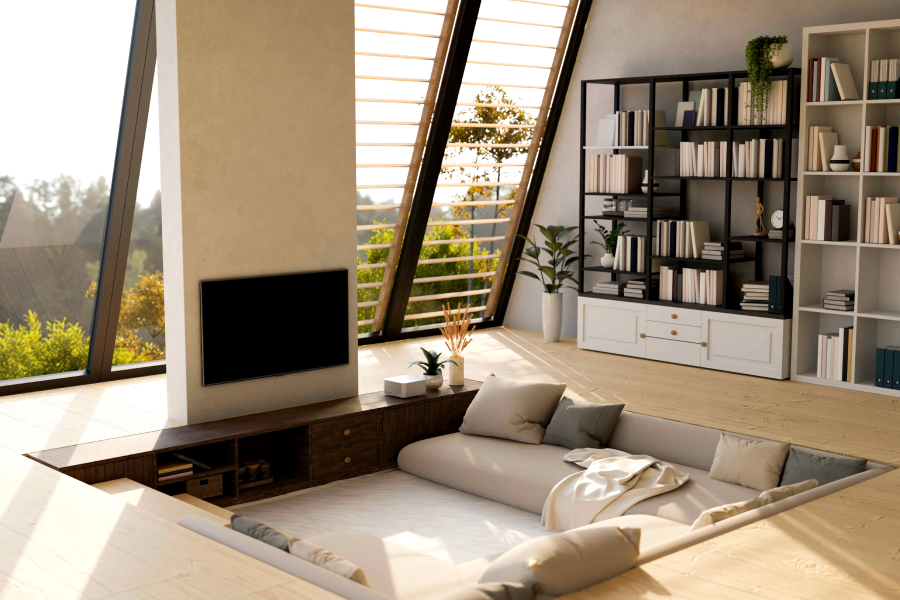
Conversation pits
Part of making a home feel warm and comfortable is creating a space that facilitates intimacy and conversation when you have guests over. That’s where conversation pits, also known as sunken living rooms, come in. The first one apparently popped up in 1927.
The 1970s trend is back. Instead of eliminating them in home renovations, some new homeowners and designers are opting to embrace the design choice. Designed by architect Harry Gesner, this unique home in Los Angeles celebrates the conversation pit as the main feature of the living room.
A conversation pit, whether outside or in a living room, adds intimacy and coziness, Hansen says. “Entertaining in a traditional room lacks the closeness,” she adds. A conversation pit, on the other hand, is a “cozy nest for people to gather and have conversations.”
You can create the feeling of a conversation pit without ever digging into the floor of your home. “If you’re not able to create the pit or a step-down, you can still recreate the style with a large sectional or a mix of sofas and chairs which can also evoke a casual and inviting atmosphere,” interior designer Tina Ramchandani says.
Other ideas: encircle couches with large pillows and comfortable, easy furniture like beanbags. Depending on your appetite for DIY, creating half-walls that your sofas can sit flush against can be relatively easy and creates a desired effect. Low-set sectionals and warm lighting also help foster this ambiance.
Velvet accents
Velvet was an incredibly popular and buzzy décor choice in the late 1970s and early 1980s, particularly among celebrities. This was the reflection of the upbeat, fun and glamorous energy that is often credited to the era of Studio 54 and desire to integrate more fun and outgoing patterns into decor.
“Velvet is a very comforting and luxe fabric,” Alison Giese, interior designer and principal at Alison Giese Interiors, says. The material has the ability to instantly create an atmosphere, so a little can go a long way, she added. Adding velvet to your environment can even be as simple as focusing on accents like velvet throw pillows and velvet-like blankets.
Hansen says “velvet is back and should never leave”, adding that it adds a “luxe and grounded” feeling to a room.
1980s
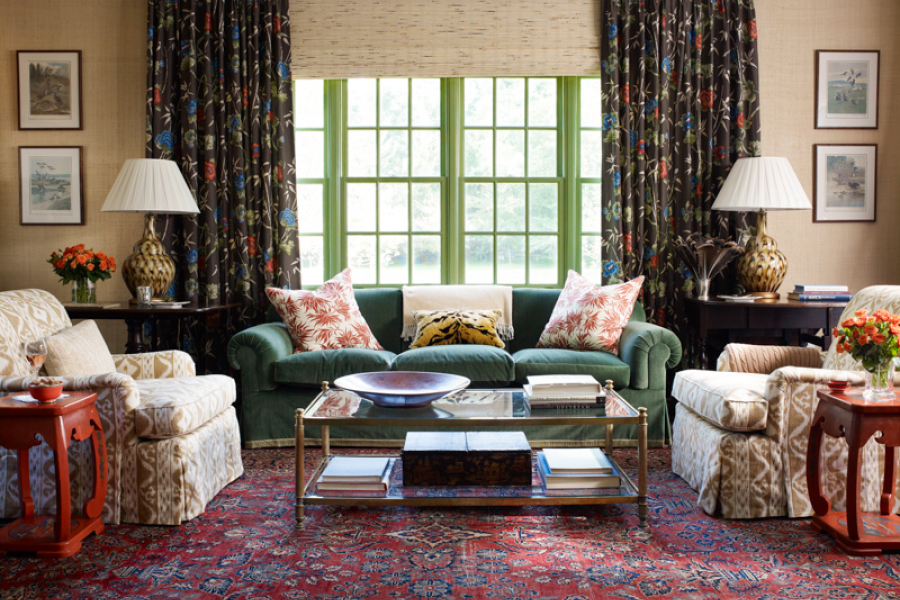
Chintz
Believe it or not, chintz — a patterned cotton textile that originally emerged from 16th century India— is making a comeback in the interior design world, popping up in traditional and modern homes alike. More specifically, the word “chintz” originates from the Hindi word “chint,” which means “speckled” or “spotted.”
Hansen is all for the resurgence of chintz. “Mixing patterns in a space shows personality and whimsy,” she says, adding that it’s perfect for people who want to liven up a space. “A multicolor pattern on a throw pillow creates an unexpected element that has been lacking in home décor,” she said.
The colorful fabric is making a resurgence as homeowners, renters and interior designers are getting more creative and maximalist with their taste and design choices.
“There’s been a movement towards a style described as ‘granny chic,’ and I believe chintz falls into it,” Giese says. “I think it really goes to what we associate with comfort in a home,” she adds. “It could be that a favorite grandparent had furniture covered in chintz that you have fond memories of, and want to create that kind of safe, cocooned feeling in your own home.”
1990s
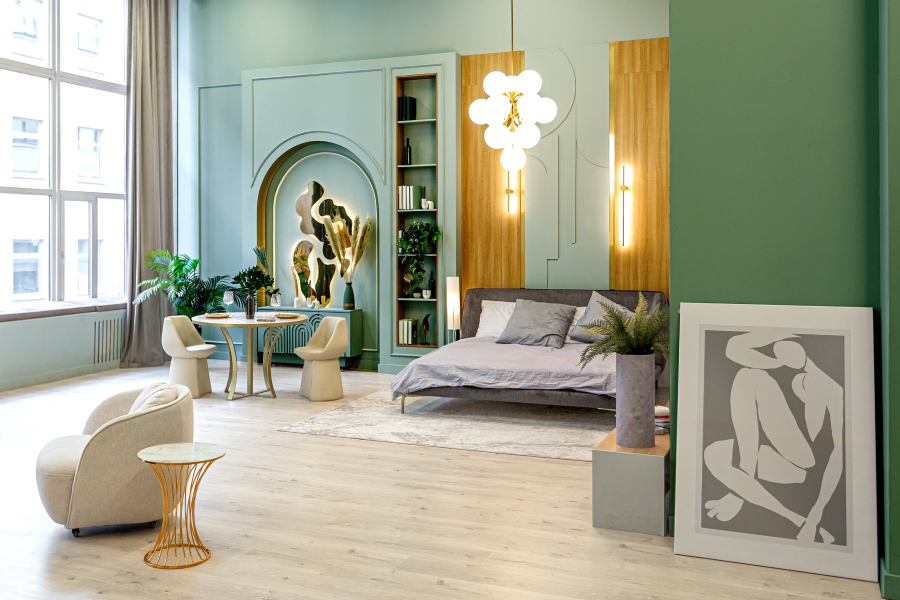
Pastel hues
Pretty in pink is no longer an old, dusty thing of the past. Pastels — think baby blue, pale pink and lavender — have returned to the modern home, brightening walls, making accents pop, and even jazzing up the typically neutral carpet in some cases.
But light colors were popular in the home décor space even before they entered the zeitgeist in the 1990s. Pastels made a splash as early as the 18th century, alongside intricate patterns, in traditional Rococo interior design settings.
Hansen says the pastel hue trend is a playful element that counteracts the prominence of all-white interiors in modern interior design. “People want to feel like their space is their own,” she says, and adding colors to a space — even if they’re lighter — can help make a space feel more unique, cozy and personal.
“There were a few years where everyone was afraid to use color. Neutral was king,” Ramchandani adds. Since the pandemic, however, “I’ve seen my clients asking for color, interest and layers,” she says. “Pastels are perfect for those that want color but are just jumping in, and don’t want to go all in.”
If you’re interested in playing around with pastels in your own home, start with accents and take it from there. By adding a pop of color on accent pillows, rugs or other accessories, you can play around with the concept and see if a bigger move — like using a pastel-colored paint for your walls — works for you.

